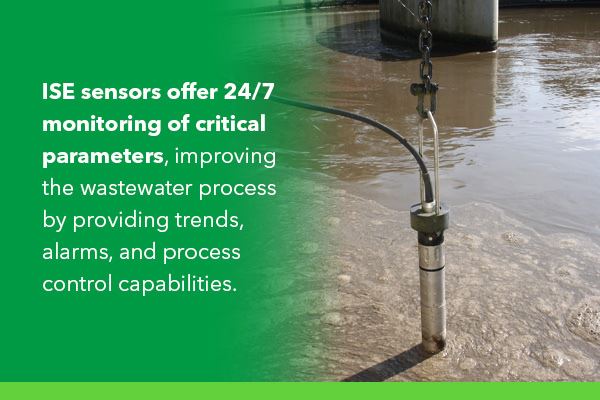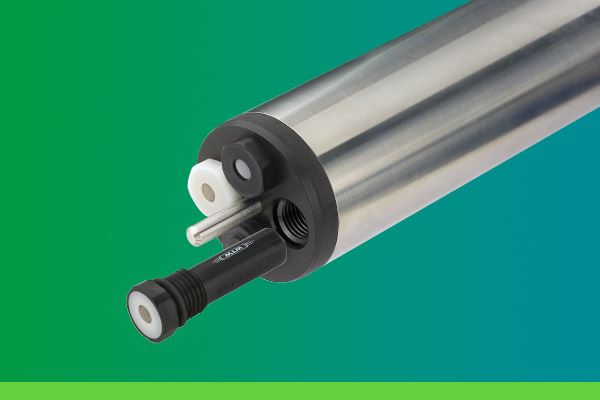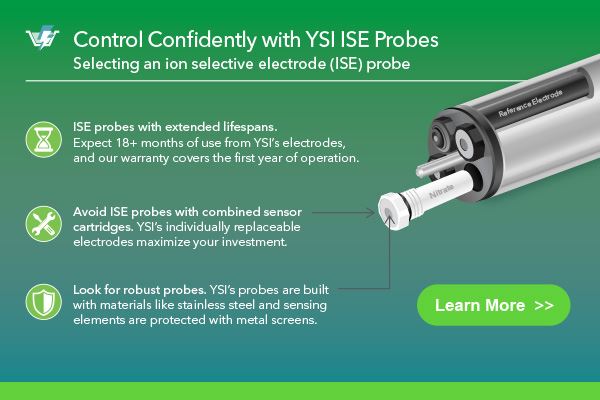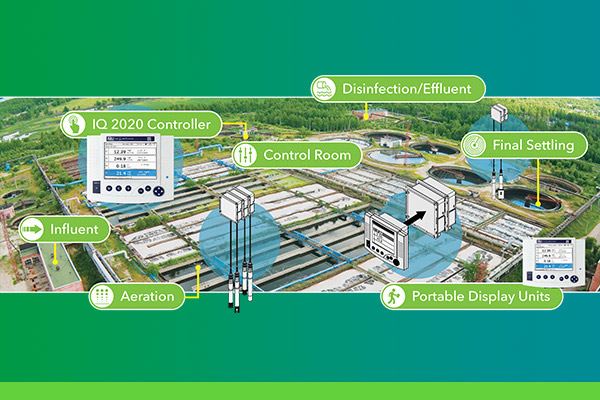6 Tips for Accurate, Reliable Data with Wastewater ISE Sensors
An ion-selective electrode (ISE) sensor is a well-established method for continuously measuring ammonium and nitrate in wastewater. These sensors offer 24/7 monitoring of critical parameters, improving the wastewater process by providing trends, alarms, and process control capabilities. ISE sensors provide many benefits over alternative monitoring options, making them an attractive option for many wastewater treatment facilities, and are proven to be very successful. However, careful attention is required to ensure ISE sensors are operating correctly. To assist with optimizing the use of these sensors, here are the top tips for providing accurate and reliable data from an online ISE sensor.

1) Maintain a Clean Sensor
Keeping a clean sensor is always a top priority for online sensor maintenance, especially in wastewater. High solids content can cover the measuring surface of an ISE sensor and cause inaccuracies quickly if sensors are not manually cleaned. Be sure to follow the manufacturer’s recommended cleaning procedure. For IQ SensorNet, we recommend using a soft bristle brush and process water to clean directly over the face of the electrodes. See the video below to watch a tutorial. The required cleaning interval is highly dependent on the measuring location and mounting. To determine the proper cleaning interval required for your sensor, start by pulling the sensor twice per week to check for solids accumulation. If the sensor remains clean and measurements are still viable, you can extend the time between checks and clean when necessary. Using a secondary cleaning option, like compressed air, is highly recommended to spend less time manually cleaning.

IQ SensorNet ISE probes feature individually user-replaceable electrodes.
2) Perform Accurate Matrix Adjustments (In-Situ Calibrations)
A matrix adjustment, or matching the sensor’s measurement to a reference sample, adjusts an ISE’s readings to a trusted lab sample taken from the sensor’s measurement location. If performed correctly, the ISE will change its reading to the value of the reference sample and trend continuously with the actual concentration of the process. If performed incorrectly, the ISE sensor will not measure accurately. To ensure accuracy, perform all aspects of the matrix adjustment carefully, including taking the grab sample, preparing the sample, and performing the laboratory analysis.
3) Use a Compensating Electrode to Maintain Accuracy at Lower Concentrations
Compensating electrodes are utilized on an ISE sensor to compensate for an interfering ion within the sample automatically. For example, potassium is a positive interference for the ammonium measurement, meaning the presence of potassium will result in a falsely high ammonium measurement. YSI’s AmmoLyt® and VARiON® have the option to include a potassium measuring electrode, which continuously monitors potassium and automatically compensates for this value in the ammonium reading. A compensating electrode is vital at lower concentrations because interfering ions have a more significant impact. Similarly, the NitraLyt® and VARiON include the option of measuring chloride, which is a compensating electrode for the nitrate measurement.

4) Budget for Electrode Replacement
YSI VARiON, AmmoLyt, and NitraLyt electrodes have an exceptional lifetime for ISE technology, but they will need occasional replacement. Depending on the process water and level of care, YSI electrodes typically last 18+ months and are warrantied for 12 months. Be prepared to replace electrodes every 12-24 months for IQ SensorNet, but this interval may be different between manufacturers. ISE electrodes have a shelf-life beginning after manufacturing, so it is recommended to order when needed and not stock spares.
5) Place in a Location Where Ammonium or Nitrate Concentrations are Above 1.0 mg/L
The one drawback of ISE technology is measuring at low concentrations. Below 1.0 mg/L, ISE sensors have a slow response to the ion concentration in the sample, which can cause issues with measurement. For example, the sensor may not react to small changes in concentration, might be more sensitive to interfering ions, and it may be challenging to perform a matrix adjustment. If an ISE sensor is placed in a location with consistently low concentrations, consider other locations with concentrations above 1.0 mg/L. For example, moving an ammonium ISE upstream in the aeration basin with consistent concentrations above 1.0 mg/L NH4-N will provide better ISE performance and more valuable data. If there are no alternate locations, consider using an Alyza IQ NH4 for low ammonium applications or a NitraVis® sensor for low nitrate applications.
6) Implement and Stick to a Maintenance Schedule
Establishing a maintenance schedule for routine cleaning, matrix adjustments, and electrode replacement is recommended to get the most out of an ISE sensor. Ignoring these maintenance activities will eventually result in inaccuracies, but staying ahead of maintenance will ensure the ISE remains accurate and reliable. By following these tips, YSI ISEs and other IQ SensorNet sensors can keep your treatment plant running smoothly and efficiently.
IQ SensorNet is a monitoring and control system of analytical instrumentation that assures compliance, improves treatment reliability, and minimizes energy and chemical usage. Display and report on up to 20 water quality sensors within a single network.

